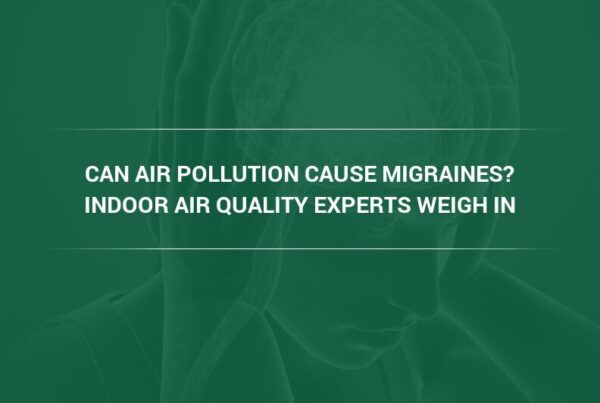Exposure to particulate matter in the air has long been connected to a wide range of poor health outcomes. A new study published in Neurology has revealed a link between short-term and long-term exposure to particulate matter and stroke mortality. Furthermore, the study has demonstrated the increased dangers associated with smaller-sized particles.
Particulate Matter Size Classifications Explained
There are three classifications of particulate matter based on the diameter of particles. Particulate matter is measured in microns (micrometers); one micron is a millionth of a meter or a thousandth of a millimeter. To put the scale of particulate matter into perspective, human skin cells range from 20 to 40 microns in diameter on average, while a large grain of pollen is approximately 70 microns across.
The size classifications of particulate matter are as follows:
- PM10 is the largest classification of particulate matter and is sometimes referred to as “coarse particulate matter,” with a diameter under 10 microns. While PM10 is small enough to be inhaled, our respiratory systems are able to filter out particles of this size before they enter the lungs.
- PM2.5 refers to particles that have a diameter of 2.5 microns or less and is also referred to as “fine particulate matter.” Much of the research examining the effects of particle pollution on human health focuses on the effects of PM2.5. The infected respiratory aerosols that are responsible for spreading the SARS-CoV-2 virus are typically classified as PM2.5.
- PM1 is the smallest classification of particulate matter with a diameter less than a single micron. These particles are usually considered the most damaging to human health because they are able to enter the bloodstream through the respiratory system and damage other organs.
New Study Links Particulate Matter Size to Stroke Mortality in 2022
A study published in the peer-review journal Neurology (“the most widely read and highly cited peer-reviewed neurology journalism,” according to the American Academy of Neurology) found a link between the size of particulate matter patients were exposed to and the risk of death from ischemic stroke.
Researchers examined stroke hospitalization data from four provinces in China between 2013 and 2019. Of the 3.1 million hospitalizations examined, 32,140 were fatal, indicating a fatality rate of 1.03%. Patients’ residential addresses were used to calculate seven-day and annual averages of PM exposure prior to hospitalization.
The study had four main conclusions:
- Stroke deaths were most strongly correlated to long-term exposure to PM1.
- Regardless of particulate matter size, short-term increases in the seven-day average of ambient particulate matter concentration preceding hospitalization for stroke were linked to a higher risk of death.
- Although the rate of death was higher for exposure to smaller particulate matter, the raw number of deaths was higher for exposure to PM10 because of more widespread concentrations of widespread PM10.
- The link was stronger for ischemic strokes (strokes caused by a blood clot that cuts off blood supply to a part of the brain) than hemorrhagic strokes (strokes caused by burst blood vessels that flood a part of the brain).
Air Filtration Solutions Limit Particulate Matter Exposure
Though the study was conducted in China, where ambient levels of particulate matter pollution are higher on average than in the United States, short-term spikes in particulate matter exposure are common across the United States. The risk of death from stroke is just one of many health complications linked to air pollution exposure.
To reduce indoor exposure to particulate matter where according to the EPA, concentrations can be two to five times higher than outdoors, commercial and residential buildings can employ MERV-A-rated and Absolute® HEPA filtration.
Camfil’s City M air purifier is an in-room air purification unit that operates independently of the building’s HVAC system to deliver purified air regardless of HVAC system filter capacity. The City M uses Absolute HEPA filtration to remove 99.995% of particles at the most penetrating particle size from the air.
Find out more about the air filtration solutions that will best fit your home, school, or office building by contacting a Camfil representative.
About Camfil Clean Air Solutions
For more than half a century, Camfil has been helping people breathe cleaner air. As a leading manufacturer of premium clean air solutions, we provide commercial and industrial systems for air filtration and air pollution control that improve worker and equipment productivity, minimize energy use, and benefit human health and the environment. We firmly believe that the best solutions for our customers are the best solutions for our planet, too. That’s why every step of the way – from design to delivery and across the product life cycle – we consider the impact of what we do on people and on the world around us. Through a fresh approach to problem-solving, innovative design, precise process control, and a strong customer focus we aim to conserve more, use less and find better ways – so we can all breathe easier.
The Camfil Group is headquartered in Stockholm, Sweden, and has 31 manufacturing sites, six R&D centers, local sales offices in 35+ countries, and about 5,200 employees and growing. We proudly serve and support customers in a wide variety of industries and in communities across the world. To discover how Camfil USA can help you to protect people, processes and the environment, visit us at www.camfil.us/
##
Media Contact:
Lynne Laake
Camfil USA Air Filters
T: 888.599.6620
E: Lynne.Laake@camfil.com
F: Friend Camfil USA on Facebook
T: Follow Camfil USA on Twitter
Y: Watch Camfil Videos on YouTube
L: Follow our LinkedIn Page
Sources:



